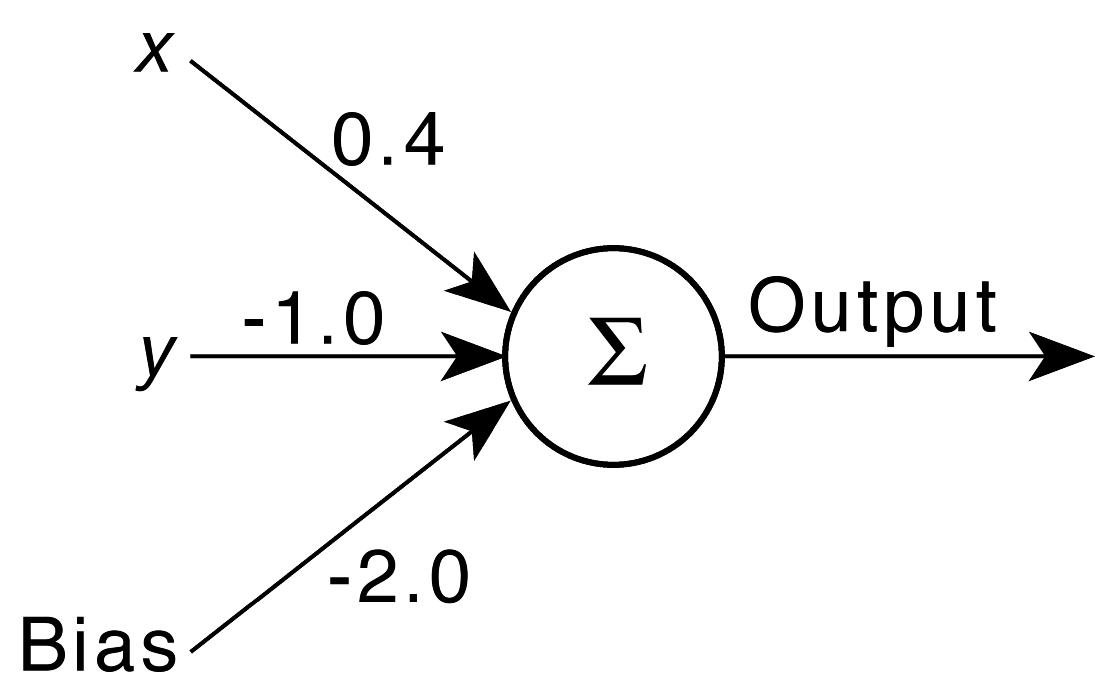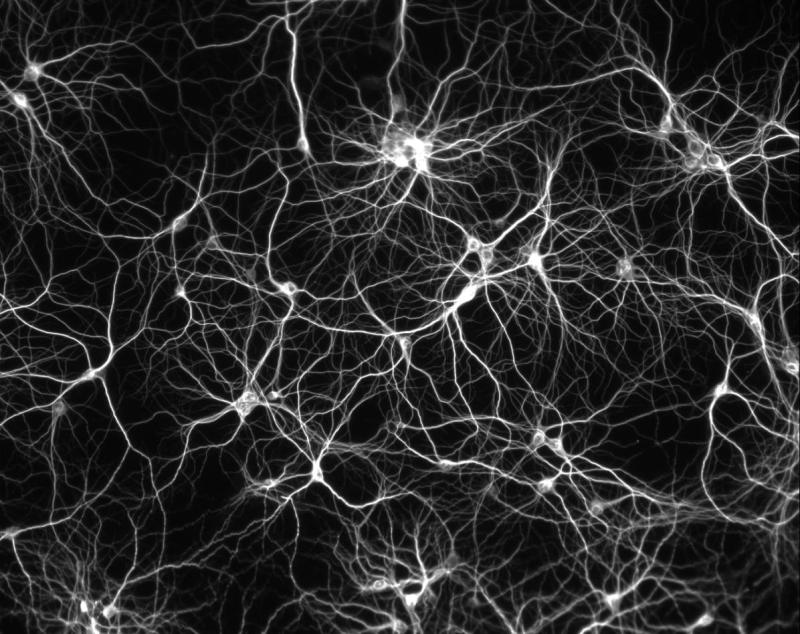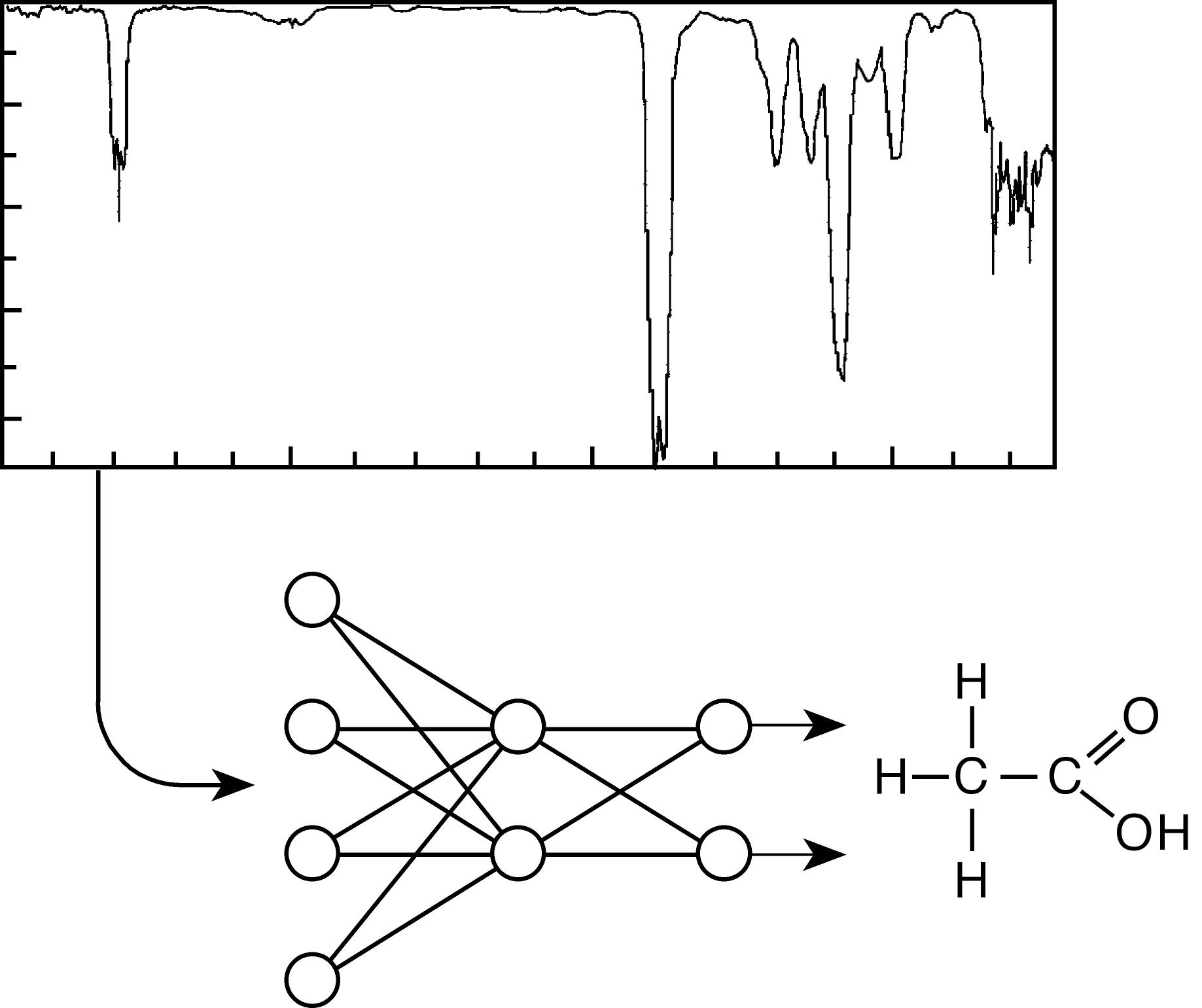


Hugh Cartwright
Artificial Neural Networks
Artificial Neural Networks (ANNs) lie at the heart of the burgeoning field of Deep Learning.
The purpose of an ANN is to link patterns of input data to associated output data. For example, pharmaceutical companies generally wish to investigate possible links between the structure of potential drugs (molecular structure providing the input) and their effectiveness in treating disease (the output). Although it is reasonable to suppose that such correlations do exist, uncovering those relationships is a challenging task.
ANNs comprise: (i) a set of computational nodes, each of which is able to perform simple mathematical operations; (ii) connections between those nodes; (iii) weights on the connections, and (iv) a computational recipe which defines how each node will calculate an output signal from the input signals it receives.
The nodes are generally arranged in layers, the first of which accepts input from the outside. The input is passed through each layer of nodes in turn, with the final layer generating output signal(s). Learning is accomplished in the network through adjustment of the connection weights, which form the memory of the system. This process, known as "training", is generally the slowest step in using an ANN, often being hundreds or thousands of times slower than the actual application of the fully-trained network.
Representative Books:
§§ Hugh M. Cartwright (ed.) Artificial Neural Networks, (3rd edn.) A forthcoming text in Springer's "Methods in Molecular Biology" series. Publication early 2020.
§§ Hugh M. Cartwright (ed.) Artificial Neural Networks, (2nd edn.) Vol 1260 in the Methods in Molecular Biology series. Springer, New York. (2015). ISBN 978-1-4939-22383-3.
§§ Hugh M. Cartwright, Using Artificial Intelligence in Chemistry and Biology: A Practical Guide, Taylor & Francis, (2008).
§§ Hugh M. Cartwright & Les M. Sztandera (eds), Soft Computing Approaches in Chemistry, Springer-Verlag, Berlin, (2003).
§§ Hugh M. Cartwright (ed.), Intelligent Data Analysis in Science, Volume 4 in the Oxford Chemistry Masters Series, Oxford University Press, (2000). ISBN 0-19-850233-8.
§§ Hugh M. Cartwright, Applications of Artificial Intelligence in Chemistry, Volume 11 in the Oxford Chemistry Primers Series, Japanese translation, Maruzen Co, Tokyo, (1995). ISBN 4-621-04088-X
§§ Hugh M. Cartwright, Applications of Artificial Intelligence in Chemistry, Volume 11 in the Oxford Chemistry Primers Series, Oxford University Press, (1993). ISBN 0-19-855736-1.
Representative Papers:
§ Keith T. Butler, Daniel W. Davies, Hugh M. Cartwright, Olexandr Isayev & Aron Walsh. Machine Learning for molecular and materials science. Nature 559, 547-555 (2018).
§ Hugh M. Cartwright & Silvia Curteanu, Neural Networks applied in chemistry. II. Neuro-evolutionary techniques in process modeling and optimization, Ind & Eng Chem Res, 2013, 52(36), 12673 - 12688. DOI: 10.1021/ie4000954.
§ Hugh M. Cartwright & Arsenij Leontjev, Use of a Genetic Algorithm - Neural Network Hybrid algorithm in the search for high efficiency solid-state phosphors. WSEAS Trans. on Computers, 10, (2011), 396-406.
§ Silvia Curteanu & Hugh M. Cartwright, Neural networks applied in chemistry I. Determination of the optimal topology of multilayer perceptron neural networks. J. Chemometrics, 25, (2011), 527-549. doi:10.1002/cem.1401
§ Alexander C. Priest, Alexander J. Williamson & Hugh M. Cartwright, The Applications of Artificial Neural Networks in the Identification of Quantitative Structure-Activity Relationships for Chemotherapeutic Drug Carcinogenicity. In P. R. Cohen, N. M. Adams, & M. R. Berthold (Eds.), Advances in Intelligent Data Analysis IX Proceedings, 6065 (2010), 137-146.
§ Hugh M. Cartwright, Artificial neural networks in Biology and Chemistry - the evolution of a new analytical tool, in Neural Networks: Methods and Applications, Methods in Molecular Biology, 458, (2008), 1-13; DJ Livingstone (ed), Humana Press.
§ Xi Chen, Les Sztandera, Hugh M. Cartwright, A Neural Network Approach to the Prediction of the Glass Transition Temperature of Polymers. Int. J. Intelligent Systems, 23, (2008), 22-32.
§ Hugh M. Cartwright, Development and uses of Artificial Intelligence in chemistry, in Reviews in Computational Chemistry, Kenny Lipkowitz & Thomas R Cundari (eds.), Wiley-VCH, (2007), 349-390.
§ C Xi, Les Sztandera & Hugh M. Cartwright, Prediction of the glass transition temperature of polymers using neural network and multiple linear regression. DWI Reports, 130, 2006.
§ Hugh M. Cartwright, Who, or what, is the teacher? How Artificial Intelligence will control Lifelong learning. Proceedings of the 3rd International Conference on Hands-on Science, Manuel F. Costa & BV Dorrio (eds.), Braga, Portugal, (2006), 576-580.
§ Hugh M. Cartwright, Les Sztandera & Rohan M. Gunatillake, Genetic algorithms and neural networks in the molecular design of novel fibres, 2nd DEXA workshop: Philosophies and Methodologies for knowledge discovery, deployment and development of decision support systems, Krakow, Poland, (2006).
§ Hugh M. Cartwright & Christopher Jones, Neural Network Based Assessment of Materials for Chemical Protection Gloves, Proceedings of EUROCON 2003 (Computer as a Tool), Ljubljana, Slovenia, Vol II, (2003), 319-323.
Home page of Hugh Cartwright
§§ Hugh M. Cartwright (ed.) Artificial Neural Networks, (3rd edn.) A forthcoming text in Springer's "Methods in Molecular Biology" series. Publication early 2020.
§§ Hugh M. Cartwright (ed.) Artificial Neural Networks, (2nd edn.) Vol 1260 in the Methods in Molecular Biology series. Springer, New York. (2015). ISBN 978-1-4939-22383-3.
§§ Hugh M. Cartwright, Using Artificial Intelligence in Chemistry and Biology: A Practical Guide, Taylor & Francis, (2008).
§§ Hugh M. Cartwright & Les M. Sztandera (eds), Soft Computing Approaches in Chemistry, Springer-Verlag, Berlin, (2003).
§§ Hugh M. Cartwright (ed.), Intelligent Data Analysis in Science, Volume 4 in the Oxford Chemistry Masters Series, Oxford University Press, (2000). ISBN 0-19-850233-8.
§§ Hugh M. Cartwright, Applications of Artificial Intelligence in Chemistry, Volume 11 in the Oxford Chemistry Primers Series, Japanese translation, Maruzen Co, Tokyo, (1995). ISBN 4-621-04088-X
§§ Hugh M. Cartwright, Applications of Artificial Intelligence in Chemistry, Volume 11 in the Oxford Chemistry Primers Series, Oxford University Press, (1993). ISBN 0-19-855736-1.
Representative Papers:
§ Keith T. Butler, Daniel W. Davies, Hugh M. Cartwright, Olexandr Isayev & Aron Walsh. Machine Learning for molecular and materials science. Nature 559, 547-555 (2018).
§ Hugh M. Cartwright & Silvia Curteanu, Neural Networks applied in chemistry. II. Neuro-evolutionary techniques in process modeling and optimization, Ind & Eng Chem Res, 2013, 52(36), 12673 - 12688. DOI: 10.1021/ie4000954.
§ Hugh M. Cartwright & Arsenij Leontjev, Use of a Genetic Algorithm - Neural Network Hybrid algorithm in the search for high efficiency solid-state phosphors. WSEAS Trans. on Computers, 10, (2011), 396-406.
§ Silvia Curteanu & Hugh M. Cartwright, Neural networks applied in chemistry I. Determination of the optimal topology of multilayer perceptron neural networks. J. Chemometrics, 25, (2011), 527-549. doi:10.1002/cem.1401
§ Alexander C. Priest, Alexander J. Williamson & Hugh M. Cartwright, The Applications of Artificial Neural Networks in the Identification of Quantitative Structure-Activity Relationships for Chemotherapeutic Drug Carcinogenicity. In P. R. Cohen, N. M. Adams, & M. R. Berthold (Eds.), Advances in Intelligent Data Analysis IX Proceedings, 6065 (2010), 137-146.
§ Hugh M. Cartwright, Artificial neural networks in Biology and Chemistry - the evolution of a new analytical tool, in Neural Networks: Methods and Applications, Methods in Molecular Biology, 458, (2008), 1-13; DJ Livingstone (ed), Humana Press.
§ Xi Chen, Les Sztandera, Hugh M. Cartwright, A Neural Network Approach to the Prediction of the Glass Transition Temperature of Polymers. Int. J. Intelligent Systems, 23, (2008), 22-32.
§ Hugh M. Cartwright, Development and uses of Artificial Intelligence in chemistry, in Reviews in Computational Chemistry, Kenny Lipkowitz & Thomas R Cundari (eds.), Wiley-VCH, (2007), 349-390.
§ C Xi, Les Sztandera & Hugh M. Cartwright, Prediction of the glass transition temperature of polymers using neural network and multiple linear regression. DWI Reports, 130, 2006.
§ Hugh M. Cartwright, Who, or what, is the teacher? How Artificial Intelligence will control Lifelong learning. Proceedings of the 3rd International Conference on Hands-on Science, Manuel F. Costa & BV Dorrio (eds.), Braga, Portugal, (2006), 576-580.
§ Hugh M. Cartwright, Les Sztandera & Rohan M. Gunatillake, Genetic algorithms and neural networks in the molecular design of novel fibres, 2nd DEXA workshop: Philosophies and Methodologies for knowledge discovery, deployment and development of decision support systems, Krakow, Poland, (2006).
§ Hugh M. Cartwright & Christopher Jones, Neural Network Based Assessment of Materials for Chemical Protection Gloves, Proceedings of EUROCON 2003 (Computer as a Tool), Ljubljana, Slovenia, Vol II, (2003), 319-323.
Home page of Hugh Cartwright